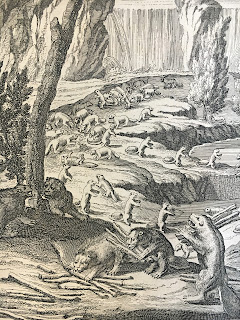Typically once the apprentice reached the age of twenty-one, he or she was released from their legal obligation to their master. Although quite common in England from the twelfth century onward, the apprenticeship model began to fall out of favor in the eighteenth century with the advent of the Industrial Revolution, which introduced wage labor and therefore made it difficult for skilled craftsmen to set up their own independent shops.
This particular indenture, signed on July 30, 1683, binds Thomas Barker to Richard Hains of Stepney
to learn the mariner's trade for the usual duration of seven years. The wavy top edge of the indenture is deliberate and was common for legal documents of the time. Once an indenture had been completed and signed by a Justice of the Peace, it was then cut down the middle in a distinctive pattern to create a unique two-piece puzzle that could be reconstituted on demand to confirm its authenticity. Typically, the apprentice's parents or parish church would hold one copy and the master would hold the other which was meant to ensure fair dealing. Our indenture was most recently employed in Carl Estabrook's "Britain and the Sea" history class, where students were able to examine it firsthand.
To explore the indenture yourself, come to Rauner and ask for MSS 683430.




